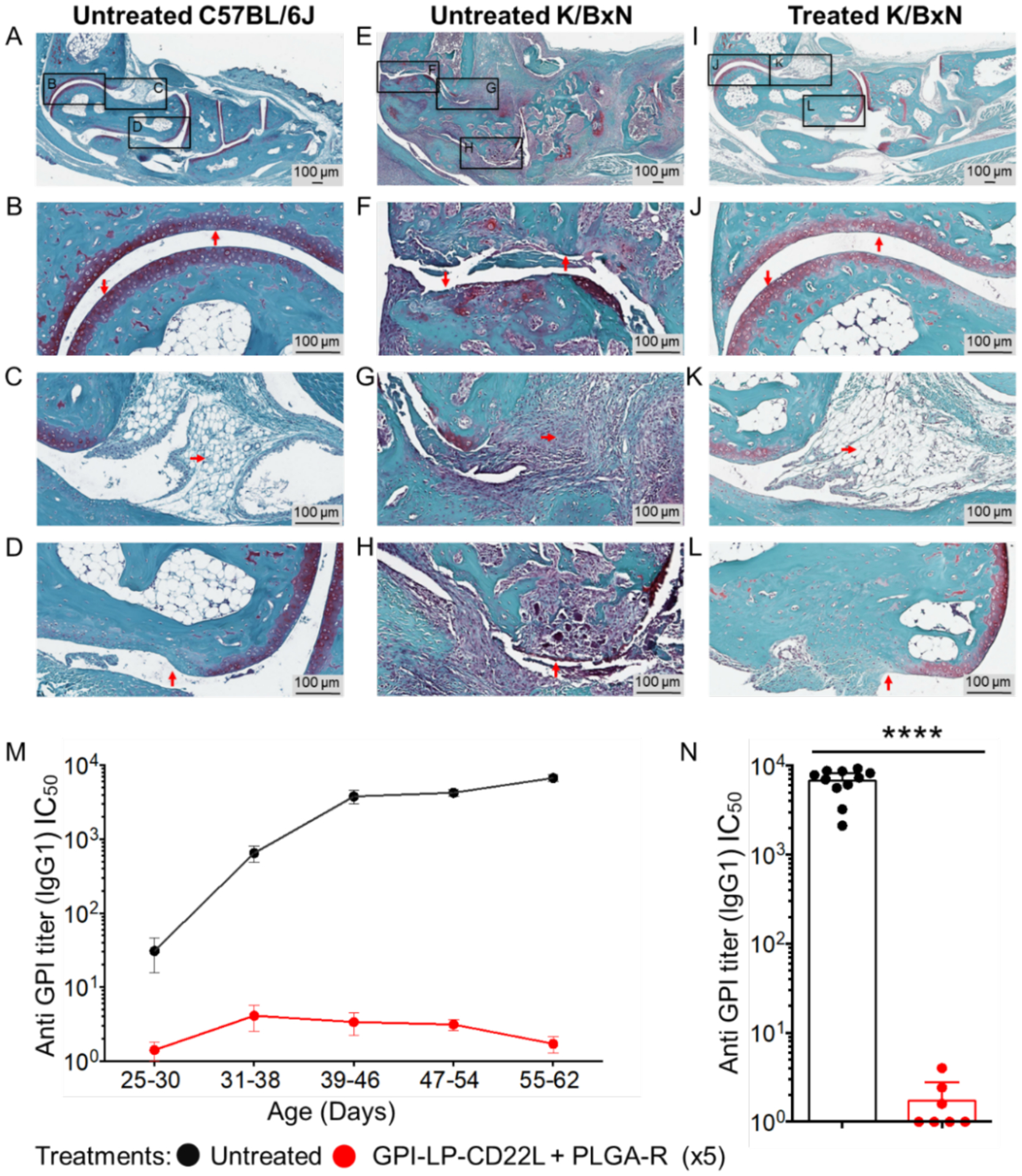Figure 4.

Co-administration of GPI-LP-CD22L and PLGA-R protects K/BxN mice from joint damage. Histochemical staining of day 55 paraffin-embedded ankle sections with Safranine O/Fast Green and hematoxylin counterstain reveals gross differences in the joint health of control wild-type mice left untreated (A), K/BxN diseased mice left untreated (E), and K/BxN diseased mice treated 5 times with GPI-LP-CD22L and PLGA-R (I). Higher magnification reveals distinct maintenance of cartilage (J), preservation of synovial tissue (K), and minimal bone resorption (L) in treated K/BxN mice, comparable to healthy controls (B, C, and D), which is in stark contrast to the loss of cartilage (F), severe infiltration of immune cells into the synovium (G), and severe bone resorption (H) seen in diseased K/BxN mice left untreated. Images are representative of two mice for each condition. (M) Co-administration of GPI-LP-CD22L and PLGA-R to K/BxN mice suppresses production of anti-GPI serum titers. Anti-GPI IgG titers from untreated K/BxN mice (black, n = 11) versus mice co-administered GPI-LP-CD22L and PLGA-R (red, n = 7) for 5 consecutive weeks as determined by ELISA. (N) Anti-GPI IgG1 titers plotted for days 55–62. All data represent the mean ± SEM. Statistical analysis was performed using the Mann-Whitney test (**** P ≤ 0.0001).
